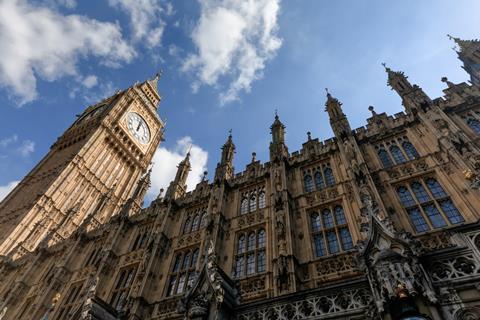Keeping MPs in Palace of Westminster during works would see costs and delivery time skyrocket, report finds
Restoring the Palace of Westminster could take up to 76 years and cost nearly £50bn if MPs do not move out during the works, according to a new report.
The most detailed study yet found that keeping the Commons and the Lords in the building could increase costs by as much as 60% and dramatically increase the length of time it takes to get the job finished.
The cheapest option would require the building to be fully vacated for up to two decades and would cost between £7bn and £13bn, according to the body set up to oversee the project.
Both the Lords and the Commons agreed to the works in principle in 2018 on the basis that they would cost around £4bn and see occupants ‘decant’ to temporary facilities for six years.
But the rising costs of the project have triggered a debate in parliament over the best approach, with several MPs, including Commons leader Mark Spencer arguing that MPs, peers and staff should stay in the building while the works are carried out.

The long-delayed review, by the Restoration and Renewal Sponsor Body, set out three options, all of which cost significantly more than the £4bn suggested four years ago and would take much longer than original estimates.
A budget ‘essential scheme’ would take between 19 and 28 years for all the works to be completed, with an 80% chance that the final cost would hit £13bn. Palace occupants would need to vacate to external premises for between 12 and 20 years.
Keeping the House of Commons running for as long as possible until all operations need to be transferred to another space within the building would increase costs by 40%, to between £9.5bn and £18.5bn, and add between seven and 15 years to the delivery time.
The most expensive scenario, in which the House of Commons remains operating throughout, would be 60% more expensive with the works taking between 27 and 48 years longer.
Including inflation and VAT, the total cost of this option would be at least £20bn and could be as high as £48bn, according to the report.
The range of estimates derives from uncertainty over the extent of refurbishment which will be needed, as this will only become clear once the works start.
The sponsor body has found that the most costly element of the project will be replacing the building’s power network, sewage and water systems, gas and heating systems and data cables.
Asbestos will also need to be removed, masonry replaced, the basement excavated and the building’s fire safety and energy efficiency substantially improved.
The study found that keeping the building occupied while these works are carried out could pose “extreme hazards”, including around fire safety compliance with health and safety laws, noise and vibration and the inability of MPs to be recalled to the House of Commons. Parliamentary business and procedures might also need to be changed and new ways of working agreed.
The report said that exclusion zones surrounded by hoardings would need to be created to separate occupants from construction activities.
It added that there was a possibility that welfare risks could increase to an “unmanageable” level which may only be discovered during further detailed design and construction planning.
The study was originally due to be published in autumn 2020. Another report that year found that the weekly maintenance bill of the crumbling palace had exceeded £2m.



























No comments yet